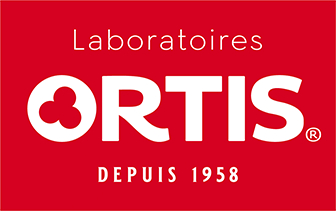
Senegalia senegal or gum acacia
Latin name
Origin
Used part
Active components
Usage
Bibliographical references
- Biological effects of gum arabic: a review of some recent research.
Ali BH, Ziada A, Blunden G.
Food Chem Toxicol. 2009 Jan;47(1):1-8.
Pubmed: http://www.ncbi.nlm.nih.gov/pubmed/18672018
- Effect of fiber source on short-chain fatty acid production and on the growth and toxin production by Clostridium difficile.
May T, Mackie RI, Fahey GC Jr, Cremin JC, Garleb KA.
Scand J Gastroenterol. 1994 Oct;29(10):916-22.
Pubmed: http://www.ncbi.nlm.nih.gov/pubmed/7839098
- Fermentation of wheat bran and gum arabic in rats fed on an elemental diet.
Walter DJ, Eastwood MA, Brydon WG, Elton RA.
Br J Nutr. 1988 Sep;60(2):225-32.
Pubmed: http://www.ncbi.nlm.nih.gov/pubmed/2848572
- Specific effect of guar gum or gum arabic on adaptation of cecal digestion to high fiber diets in the rat.
Tulung B, Rémésy C, Demigné C.
J Nutr. 1987 Sep;117(9):1556-61.
Pubmed: http://www.ncbi.nlm.nih.gov/pubmed/2821201
- Gum arabic establishes prebiotic functionality in healthy human volunteers in a dose-dependent manner.
Calame W, Weseler AR, Viebke C, Flynn C, Siemensma AD.
Br J Nutr. 2008 Dec;100(6):1269-75.
Pubmed: http://www.ncbi.nlm.nih.gov/pubmed/18466655
- Acacia Gum is a Bifidogenic Dietary Fibre with High Digestive Tolerance in Healthy Humans
Christine Cherbut, Catherine Michel, Virginie Raison, Thierry Kravtchenko and Meance Severine
2003, Vol. 15, No. 1 , Pages 43-50
Informa Healthcare: http://informahealthcare.com/doi/abs/10.1080/08910600310014377
- The regulatory and scientific approach to defining gum arabic (Acacia senegal and Acacia seyal) as a dietary fibres
Glyn O. Phillipsa,, Takashi Ogasawarab, Kazunari Ushida
Food Hydrocolloids, Volume 22, issue 1 (January, 2008), p. 24-35.
Europe PMC: http://europepmc.org/abstract/AGR/IND43938420
- In vitro prebiotic effects of Acacia gums onto the human intestinal microbiota depends on both botanical origin and environmental pH.
Michel C, Kravtchenko TP, David A, Gueneau S, Kozlowski F, Cherbut C.
Anaerobe. 1998 Dec;4(6):257-66.
Pubmed: http://www.ncbi.nlm.nih.gov/pubmed/16887651
The health claims that feature on our website in relation to the plants contained in our products are compliant with the list of health claims awaiting final assessment by the Community authorities (cf. website of the European Commission: http://ec.europa.eu/nuhclaims/). However, they may be subject to modification following their assessment by the national competent authorities.
The health claims relating to other nutrients or substances contained in our products that feature on our site are compliant with Regulation No. 432/2012 of the Commission of 16 May 2012 which establishes a list of authorised health claims authorised in relation to food products, other than those in reference to the reduction of the risk of disease as well as community-based development and child health (cf. website of the European Commission: http://ec.europa.eu/nuhclaims/).

 Belgique
Belgique  België
België  France
France  Italia
Italia  Portugal
Portugal  España
España  United Kingdom
United Kingdom  Κύπρος
Κύπρος 